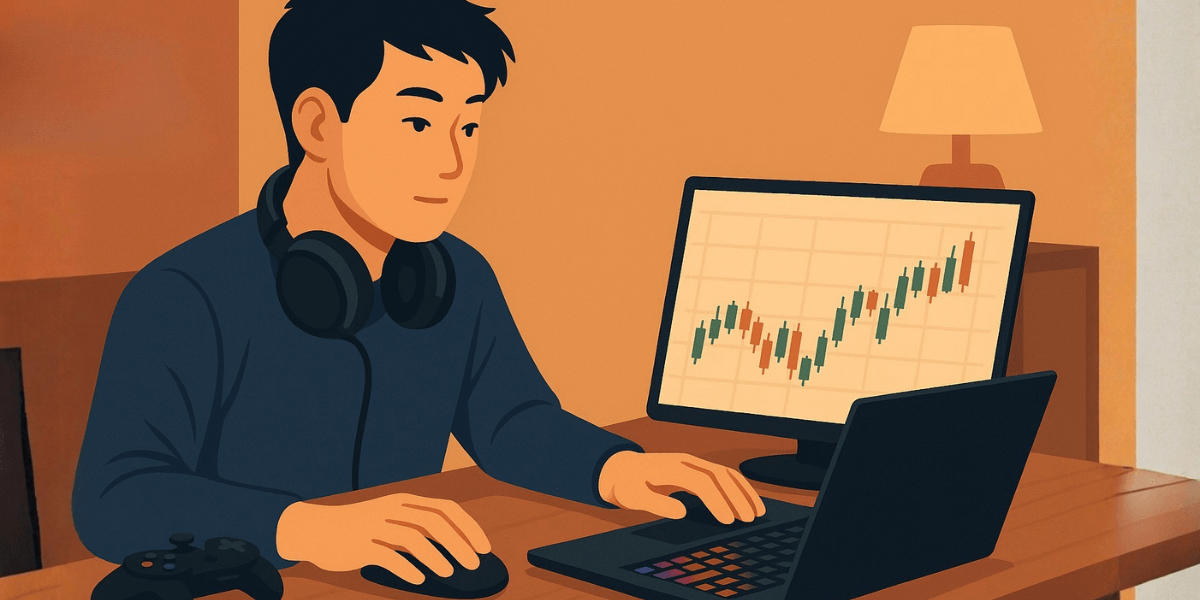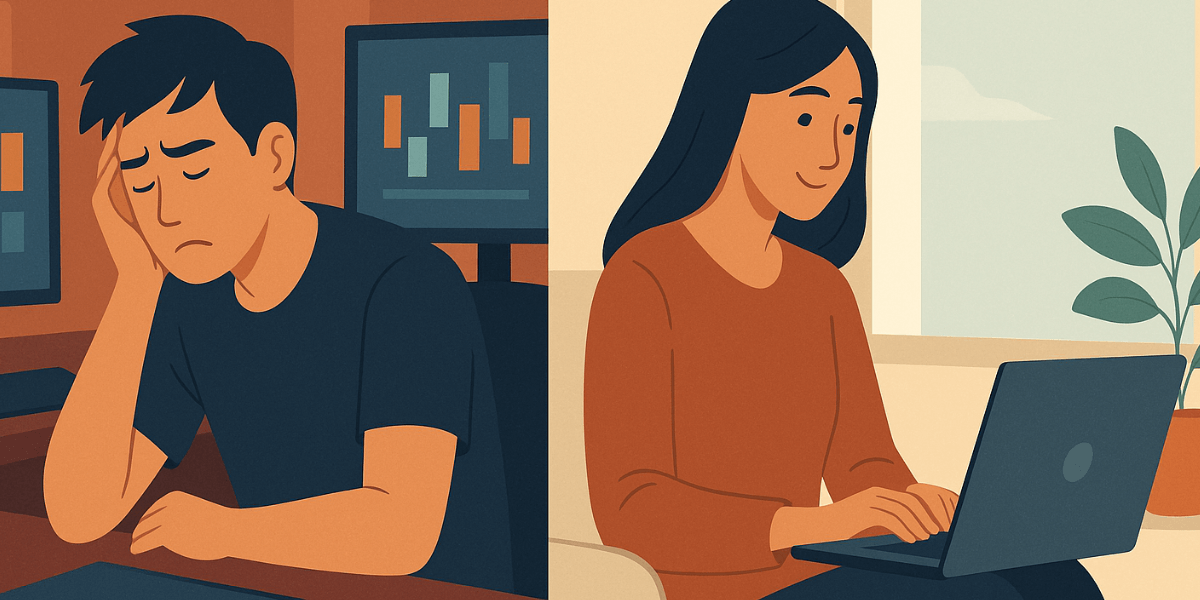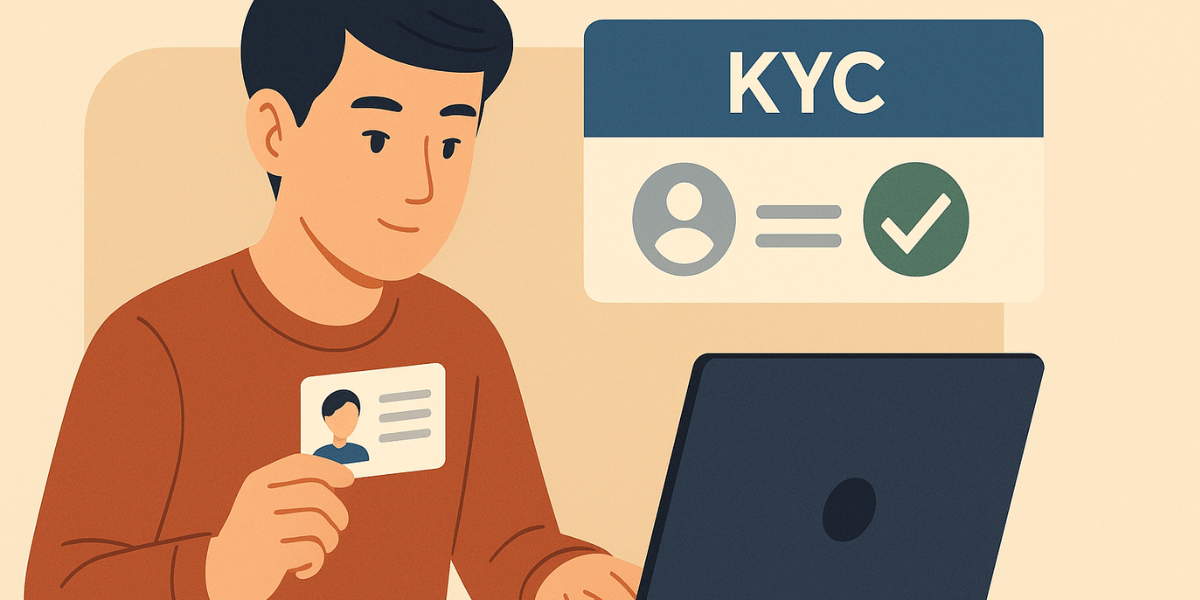Forex traders often sacrifice rest and balance in pursuit of opportunity. The market never truly sleeps, and with modern technology, neither do many traders. Surrounded by multiple monitors, smartphones, and tablets, they live immersed in glowing data, indicators, and chart updates that flow endlessly across blue-lit screens. While this digital environment fuels precision and accessibility, it also carries an invisible cost that too many underestimate — the damage blue light inflicts on the human sleep cycle.
Forex traders depend on clarity, focus, and emotional control. However, exposure to artificial blue light, especially during nighttime trading sessions, disrupts the circadian rhythm, suppresses melatonin production, and leads to chronic sleep deprivation. Over time, this invisible disruption begins to affect reaction times, cognitive performance, and emotional stability — three pillars of successful trading. Without understanding how blue light influences the mind and body, many traders unknowingly undermine their ability to perform at their best.
This article explores the science behind blue light, its specific impact on Forex traders, and the long-term consequences it has on sleep quality, health, and trading consistency. It also provides practical strategies to reduce exposure and restore natural balance, ensuring that traders can maintain both productivity and well-being in a 24-hour global market.
Forex trading is a profession defined by constant vigilance. The market operates across time zones — from Tokyo to London to New York — meaning that opportunities exist at every hour of the day and night. Many traders, driven by ambition or fear of missing out, find themselves extending their screen time late into the night. The glow of monitors becomes a symbol of dedication and persistence. Yet, this habit quietly chips away at one of the body’s most essential processes: sleep.
Unlike physical fatigue, sleep deprivation builds gradually, often unnoticed until it begins to affect performance. A trader who stays up late analyzing charts or monitoring open positions may believe they are gaining an advantage. In reality, they are slowly depleting their most critical resource — mental energy. The irony is that while traders seek to predict the market’s movements, they often ignore the predictable biology of their own bodies. The result is a cycle of overexposure, exhaustion, and decline that no strategy can compensate for.
Blue light exposure is not inherently harmful. During the day, it helps maintain alertness, regulates mood, and synchronizes the body’s internal clock. The problem arises at night when artificial light confuses the brain into thinking it’s still daytime. For traders, this means reduced melatonin, delayed sleep onset, and fragmented rest. What follows is a cascading effect on concentration, emotional regulation, and decision-making — all essential for success in Forex trading.
Understanding Blue Light and the Circadian Rhythm
Blue light occupies the high-energy, short-wavelength portion of the visible light spectrum, typically between 400 and 490 nanometers. It is naturally present in sunlight, but modern screens — from computers to phones — emit concentrated doses of it at close range. This artificial exposure, particularly in the evening, suppresses melatonin production and shifts the circadian rhythm forward. The body’s biological clock, which manages sleep and wake cycles, becomes misaligned with the external environment.
When this alignment breaks down, sleep becomes irregular and shallow. The mind takes longer to unwind, dreams are shorter, and waking up feels less restorative. For traders who rely on mental agility, this disruption manifests in slower reactions, decreased attention span, and heightened emotional reactivity. Sleep loss, compounded by constant blue-light exposure, turns sharp analysis into fuzzy intuition — and in trading, that difference can be costly.
Why Forex Traders Are Especially Vulnerable
Forex traders operate under conditions that make them uniquely susceptible to blue light’s negative effects. They often work during late-night sessions, switching between time zones, and use multiple high-brightness monitors for data visualization. Many also rely on smartphones and tablets to stay connected after leaving their desks, meaning exposure continues even after trading hours. The cumulative result is a nearly continuous bombardment of blue wavelengths — from dawn until midnight and beyond.
These habits interfere with natural hormonal rhythms and reduce both the quantity and quality of sleep. Even when traders manage to rest, their brains remain overstimulated from screen exposure. Studies show that people exposed to blue light before sleep take 30% longer to fall asleep and experience 20% less REM sleep — the phase most critical for memory consolidation and emotional regulation. In practical terms, a trader who sleeps poorly makes slower, less rational decisions and reacts emotionally to market volatility.
The Physical and Cognitive Impact of Blue Light
Blue light doesn’t just affect sleep — it influences nearly every aspect of human performance. Prolonged exposure can strain the eyes, increase headaches, and lead to a condition known as Computer Vision Syndrome (CVS). Symptoms include blurred vision, dry eyes, and neck or shoulder discomfort from prolonged focus and poor posture. Over months and years, this strain accumulates into chronic fatigue that quietly reduces trading efficiency.
But the most damaging consequence lies within the brain. Lack of restorative sleep impairs the prefrontal cortex, the area responsible for judgment, impulse control, and strategic thinking. Simultaneously, the amygdala — the brain’s emotional center — becomes hyperactive. The result is a dangerous psychological imbalance: the trader becomes more reactive, less patient, and prone to overtrading. What appears as impulsivity or bad luck often begins as sleep deprivation and overstimulation.
Table: How Blue Light Affects Traders
| Category | Impact |
|---|---|
| Melatonin Production | Suppressed, leading to delayed sleep onset |
| Sleep Quality | Reduced deep and REM sleep, increasing fatigue |
| Decision-Making | Slower reactions, increased emotional impulsivity |
| Vision and Comfort | Eye strain, dryness, and headaches from prolonged screen exposure |
| Long-Term Health | Elevated risk of stress, depression, and metabolic disruption |
The Sleep-Performance Connection in Trading
Sleep is the foundation of all cognitive performance. During rest, the brain consolidates information, balances neurotransmitters, and restores the energy needed for decision-making. When traders sleep poorly, their brains lose efficiency. They begin to miss signals, second-guess themselves, and react emotionally rather than analytically. This leads to increased errors, excessive risk-taking, and inconsistent performance.
Sleep deprivation also distorts time perception. Tired traders tend to overestimate short-term gains and underestimate long-term risks — the exact opposite of sound trading psychology. Over time, these distorted perceptions lead to financial and emotional instability. Even with excellent technical skills, a sleep-deprived trader gradually loses their edge, falling victim to mistakes that a well-rested mind would easily avoid.
Behavioral Symptoms of Sleep Disruption
The effects of blue light and poor sleep are often subtle but visible. Traders begin to rely more on caffeine or energy drinks, extend their working hours, and check charts obsessively even outside trading sessions. They feel productive, but this hyperactivity masks exhaustion. Eventually, burnout follows. Mood swings, irritability, and decision fatigue become routine. The trader’s performance graph mirrors their sleep pattern — erratic, unpredictable, and unsustainable.
How to Minimize Blue-Light Exposure
Fortunately, reducing blue light’s impact doesn’t require abandoning technology. With practical steps and discipline, traders can protect their sleep while maintaining performance. The goal is not to eliminate exposure entirely but to manage it strategically, balancing screen time with recovery time.
1. Enable Blue-Light Filters
Most modern operating systems and monitors include “Night Mode” or “Eye Comfort” settings that reduce blue-light intensity after sunset. Using these features, or third-party apps like f.lux, helps shift screen color temperature to warmer tones, allowing the brain to relax gradually before sleep.
2. Adjust Room Lighting
Ambient lighting is as important as screen brightness. Avoid trading in dark rooms lit only by monitors; the contrast between bright screens and a dark environment increases eye strain. Use soft, warm lighting around the workspace to minimize glare and maintain a balanced visual environment.
3. Limit Screen Use Before Bedtime
Traders should set a “digital cutoff” at least one hour before sleep. This curfew gives the body time to lower cortisol and release melatonin naturally. Reviewing charts or market news from bed not only stimulates the brain but also conditions it to associate the bedroom with stress instead of rest.
4. Use Blue-Light Blocking Glasses
Blue-light glasses filter high-energy wavelengths, reducing their impact without affecting color accuracy. Wearing them in the evening can significantly reduce melatonin suppression, improve sleep quality, and prevent headaches during long trading sessions.
5. Maintain Consistent Sleep Hours
The human body thrives on rhythm. Traders should maintain a consistent bedtime and wake-up time, even across different trading sessions. If late-night trading is unavoidable, structured naps and short rest intervals can help prevent accumulated sleep debt.
Long-Term Benefits of Managing Blue Light
Reducing blue-light exposure leads to more than better sleep — it transforms a trader’s overall performance. Improved rest enhances focus, emotional control, and memory consolidation. Traders who sleep well recover faster from losses, learn more effectively from mistakes, and maintain the discipline that distinguishes professionals from amateurs. Over time, the benefits compound: fewer impulsive trades, steadier execution, and higher confidence.
From a health perspective, consistent sleep strengthens the immune system, stabilizes metabolism, and improves cardiovascular health — crucial for those who spend much of their lives in sedentary, high-stress environments. The combination of physical stability and mental clarity creates the foundation for long-term sustainability in trading.
Conclusion
In the fast-paced, constantly connected world of Forex trading, blue light has become an invisible yet formidable adversary. Traders pride themselves on discipline, precision, and endurance — traits essential to survive in the global financial markets. But behind the glowing monitors and endless data streams lies a physiological threat that undermines these very strengths. Blue light quietly steals rest, dulls focus, and blurs the sharp analytical edge that defines great traders. Understanding its impact and taking steps to mitigate it is not merely about comfort — it is about sustaining peak performance and protecting long-term health.
Sleep is a biological necessity, not a luxury. It is during rest that the mind consolidates memories, fine-tunes decision-making circuits, and restores emotional balance. When traders deprive themselves of quality sleep due to prolonged exposure to blue light, they are essentially sabotaging their greatest asset — their brain. Each hour spent staring at screens deep into the night disrupts the natural production of melatonin, the hormone that signals the body to rest. The result is delayed sleep, restless nights, and shallow recovery. Over time, this leads to chronic fatigue, decreased cognitive function, and an erosion of trading discipline.
The hidden cost of this imbalance manifests in subtle ways. Traders begin to notice that they overreact to minor market movements, exit trades prematurely, or chase losses in frustration. These behavioral shifts are not purely psychological; they are neurochemical. A tired brain produces more cortisol, the stress hormone, and less serotonin, which regulates mood and calmness. This imbalance makes rational thought harder to sustain and amplifies impulsivity. The disciplined strategy that worked flawlessly under rested conditions begins to fail under exhaustion. In many cases, traders blame their strategy when the real culprit is sleeplessness induced by digital overexposure.
Moreover, chronic blue-light exposure and poor sleep create a cascading effect that extends beyond trading screens. Physically, the body starts showing signs of imbalance — headaches, eye strain, muscle tension, and even immune system weakness. Psychologically, traders experience burnout, emotional fatigue, and anxiety, often mistaking them for professional stress rather than biological exhaustion. This feedback loop becomes self-perpetuating: the more tired the trader feels, the longer they stare at screens trying to compensate, and the worse their performance becomes.
Breaking this cycle requires intention, awareness, and consistency. The first step is acknowledging that performance and rest are not opposing forces but complementary ones. A trader who sleeps well processes information faster, spots patterns more efficiently, and makes calmer decisions under pressure. Blue-light management, therefore, is not a wellness trend — it is a trading strategy in itself. By adjusting lighting, enabling blue-light filters, and setting screen curfews, traders protect the neural clarity that separates winners from impulsive participants. Even a modest improvement in sleep quality can translate into measurable improvements in trading performance, risk assessment, and emotional control.
Beyond individual benefits, adopting ergonomic and sleep-conscious habits contributes to longevity in the profession. Many traders burn out not because of market volatility, but because of physiological decline caused by years of neglecting rest. Trading should be viewed as a long-term endeavor, much like athletic performance. Just as athletes prioritize recovery, traders must treat sleep as their training ground for mental endurance. Consistent rest sharpens intuition, strengthens concentration, and increases emotional resilience — all crucial for navigating the unpredictability of global currency markets.
It’s also important to recognize that managing blue light extends beyond turning off devices. It involves building a holistic relationship with technology. This means creating a workspace that supports health — proper screen height, warm ambient lighting, regular breaks, and mindfulness about when and how screens are used. Blue-light glasses, warm display settings, and digital detox routines are not signs of weakness or inefficiency; they are hallmarks of professionalism. The most successful traders are not those who work the longest hours, but those who sustain clarity for the longest time.
Furthermore, good sleep hygiene fosters emotional stability, one of the most undervalued skills in Forex trading. Markets thrive on uncertainty, and emotional volatility can be a trader’s downfall. Well-rested traders are better equipped to handle drawdowns, resist overtrading, and maintain composure when volatility spikes. They view losses as data, not personal failure. This emotional detachment, rooted in physiological balance, often separates profitable consistency from destructive impulsiveness. In that sense, quality sleep and blue-light management become the hidden edge that most traders overlook.
Frequently Asked Questions
How does blue light affect Forex traders?
Blue light suppresses melatonin production and disrupts the circadian rhythm, making it harder to sleep and recover. This leads to fatigue, irritability, and impaired decision-making during trading sessions.
Can poor sleep really impact trading results?
Yes. Lack of quality sleep affects attention span, emotional control, and reaction time — key factors for success in Forex trading. Sleep-deprived traders often make impulsive or inconsistent decisions.
What practical steps can reduce blue-light exposure?
Use night mode on devices, wear blue-light blocking glasses, maintain ambient lighting, and avoid screens at least one hour before bed to protect sleep cycles.
Is blue light the only reason traders lose sleep?
No, stress and irregular schedules also contribute. However, blue light is one of the most controllable factors, and managing it significantly improves sleep quality and overall well-being.
Can managing blue light improve trading consistency?
Absolutely. Rested traders think more clearly, control emotions better, and maintain focus longer — leading to more stable and profitable trading performance over time.
Note: Any opinions expressed in this article are not to be considered investment advice and are solely those of the authors. Singapore Forex Club is not responsible for any financial decisions based on this article's contents. Readers may use this data for information and educational purposes only.







